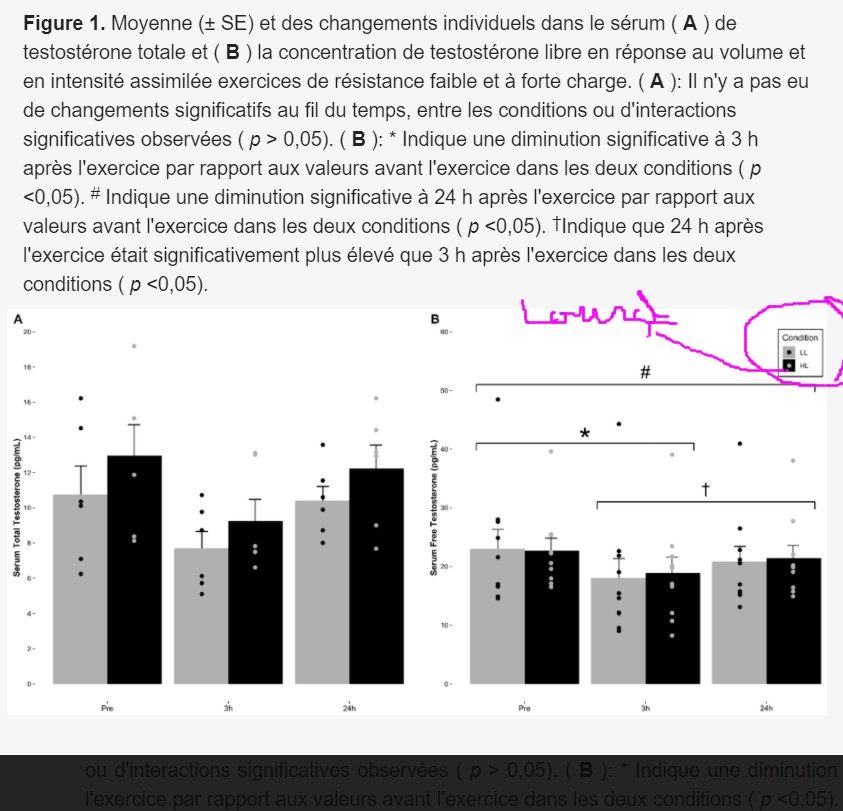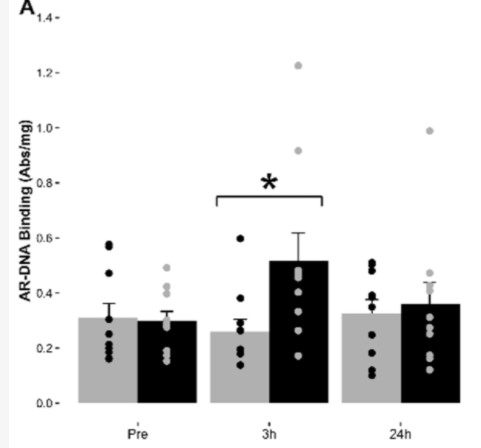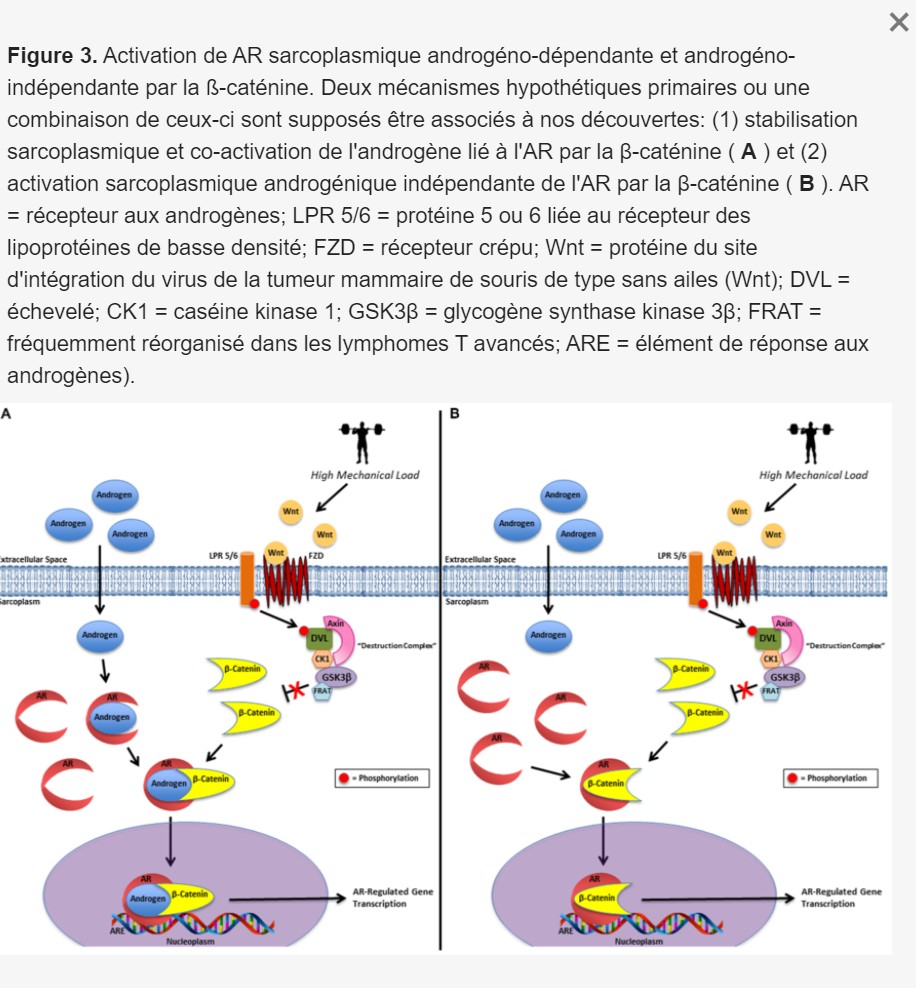High-Load Resistance Exercise Augments Androgen Receptor–DNA Binding and Wnt/β-Catenin Signaling without Increases in Serum/Muscle Androgens or Androgen Receptor Content
by Thomas D. Cardaci Nutrients 2020, 12(12), 3829;
The purpose of this study was (1) to determine the effect of single bouts of volume- and intensity-equated low- (LL) and high-load (HL) full-body resistance exercise (RE) on AR-DNA binding, serum/muscle testosterone and dihydrotestosterone, muscle androgen receptor (AR), and AR-DNA binding; and, (2) to determine the effect of RE on sarcoplasmic and nucleoplasmic β-catenin concentrations in order to determine their impact on mediating AR-DNA binding in the absence/presence of serum/muscle androgen and AR protein.
In a cross-over design, 10 resistance-trained males completed volume- and intensity-equated LL and HL full-body RE. Blood and muscle samples were collected at pre-, 3 h-, and 24 h post-exercise. Separate 2 × 3 factorial analyses of variance (ANOVAs) with repeated measures and pairwise comparisons with a Bonferroni adjustment were used to analyze the main effects. No significant differences were observed in muscle AR, testosterone, dihydrotestosterone, or serum total testosterone in either condition (p > 0.05).
Serum-free testosterone was significantly decreased 3 h post-exercise and remained significantly less than baseline 24 h post-exercise in both conditions (p < 0.05). In response to HL, AR-DNA binding significantly increased at 3 h post-exercise (p < 0.05), whereas no significant differences were observed at any time in response to LL (p > 0.05). Moreover, sarcoplasmic β-catenin was significantly greater in HL (p < 0.05) without significant changes in nucleoplasmic β-catenin (p > 0.05).
In conclusion, increases in AR-DNA binding in response to HL RE indicate AR signaling may be load-dependent. Furthermore, despite the lack of increase in serum and muscle androgens or AR content following HL RE, elevations in AR-DNA binding with elevated sarcoplasmic β-catenin suggests β-catenin may be facilitating this response.
















